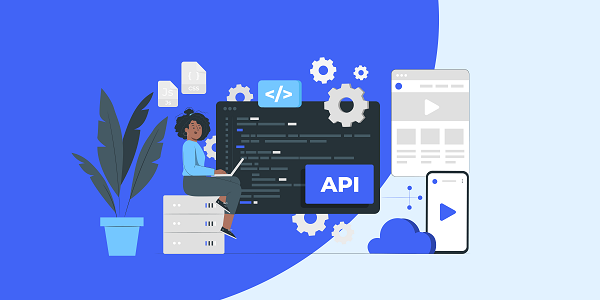Residential Proxies
Allowlisted 200M+ IPs from real ISP. Managed/obtained proxies via dashboard.

Proxies Services
Residential Proxies
Allowlisted 200M+ IPs from real ISP. Managed/obtained proxies via dashboard.
Residential (Socks5) Proxies
Over 200 million real IPs in 190+ locations,
Unlimited Residential Proxies
Unlimited use of IP and Traffic, AI Intelligent Rotating Residential Proxies
Static Residential proxies
Long-lasting dedicated proxy, non-rotating residential proxy
Dedicated Datacenter Proxies
Use stable, fast, and furious 700K+ datacenter IPs worldwide.
Mobile Proxies
Dive into a 10M+ ethically-sourced mobile lP pool with 160+ locations and 700+ ASNs.
Scrapers
Collection of public structured data from all websites
Proxies
Residential Proxies
Allowlisted 200M+ IPs from real ISP. Managed/obtained proxies via dashboard.
Starts from
$0.6/ GB
Residential (Socks5) Proxies
Over 200 million real IPs in 190+ locations,
Starts from
$0.03/ IP
Unlimited Residential Proxies
Unlimited use of IP and Traffic, AI Intelligent Rotating Residential Proxies
Starts from
$1816/ MONTH
Rotating ISP Proxies
ABCProxy's Rotating ISP Proxies guarantee long session time.
Starts from
$0.4/ GB
Static Residential proxies
Long-lasting dedicated proxy, non-rotating residential proxy
Starts from
$4.5/MONTH
Dedicated Datacenter Proxies
Use stable, fast, and furious 700K+ datacenter IPs worldwide.
Starts from
$4.5/MONTH
Mobile Proxies
Allowlisted 200M+ IPs from real ISP. Managed/obtained proxies via dashboard.
Starts from
$1.2/ GB
Scrapers
Web Unblocker
Simulate real user behavior to over-come anti-bot detection
Starts from
$1.2/GB
Serp API
Get real-time search engine data With SERP API
Starts from
$0.3/1K results
Scraping Browser
Scale scraping browsers with built-inunblocking and hosting
Starts from
$2.5/GB
Documentation
All features, parameters, and integration details, backed by code samples in every coding language.
TOOLS
Resources
Addons
ABCProxy Extension for Chrome
Free Chrome proxy manager extension that works with any proxy provider.
ABCProxy Extension for Firefox
Free Firefox proxy manager extension that works with any proxy provider.
Proxy Manager
Manage all proxies using APM interface
Proxy Checker
Free online proxy checker analyzing health, type, and country.
Proxies
AI Developmen
Acquire large-scale multimodal web data for machine learning
Sales & E-commerce
Collect pricing data on every product acrossthe web to get and maintain a competitive advantage
Threat Intelligence
Get real-time data and access multiple geo-locations around the world.
Copyright Infringement Monitoring
Find and gather all the evidence to stop copyright infringements.
Social Media for Marketing
Dominate your industry space on social media with smarter campaigns, anticipate the next big trends
Travel Fare Aggregation
Get real-time data and access multiple geo-locations around the world.
By Use Case
English
繁體中文
Русский
Indonesia
Português
Español
بالعربية


This article analyzes the technical advantages of the Python Requests library in data collection, explores how proxy IP can enhance its performance, and introduces the adaptation solution provided by abcproxy.
What are Python Requests and how do they relate to proxy IP?
Python Requests is a third-party Python library based on HTTP protocol, which is used to simplify web page requests and data interaction processes, and supports request methods such as GET/POST, session persistence, and proxy configuration. In data collection, proxy IP services (such as abcproxy's residential proxy, static ISP proxy, etc.) provide IP anonymization support, solve access frequency restrictions, regional blocking, and other issues, and ensure the stability and success rate of data capture.
How does Python Requests improve data collection efficiency?
The core advantage of Python Requests lies in its flexibility and scalability, which is reflected in the following dimensions:
Fine-grained control of request parameters
By customizing Headers, Cookies, and timeout parameters, you can simulate real browser behavior. For example, by setting User-proxy to a common browser identifier and using abcproxy's residential proxy IP, you can reduce the probability of being identified as a crawler by the target website.
Session Object Persistence
Use Session objects to maintain TCP connection reuse and reduce SSL handshake overhead. In collection scenarios that require login (such as social media data crawling), combine with static ISP proxy to maintain IP consistency and avoid account abnormal detection caused by frequent IP changes.
What technical support is needed for Python Requests to run?
Efficient data collection requires the construction of a three-layer technical framework:
Network Access Layer
Proxy IP is the infrastructure to break through the anti-crawling mechanism. For example, use a highly anonymous residential proxy to circumvent IP blocking, or use a Socks5 proxy to penetrate corporate firewall restrictions.
Request Control Layer
The Requests library supports asynchronous requests, retry mechanisms, and rate limits. For example, you can set the interval between each request to 2-5 seconds and integrate the abcproxy API to automatically switch IP addresses when an exception occurs.
Data processing layer
Combine BeautifulSoup, lxml and other parsing libraries to extract structured data, and handle HTTP error codes (such as 429/503) through the exception capture module.
Why is the proxy IP a key component of Python Requests?
The proxy IP plays a core role in the Requests-driven collection process:
Geo-blocking bypass
Through abcproxy's regional directional proxy (such as US residential IP), you can collect geographically restricted content. For example, obtain product review data from Amazon's specific country site.
Request Load Balancing
Distributed proxy IP pools disperse request pressure. For example, configure 10 data center proxy IPs for polling to control the request frequency of a single IP within the tolerance threshold of the target website.
Enhanced privacy protection
Highly anonymous proxies hide real IP addresses and network fingerprints, ensuring the information security of the collector in sensitive scenarios such as public opinion monitoring.
How does abcproxy adapt to the needs of Python Requests?
abcproxy provides targeted support for typical application scenarios of Python Requests:
Fully compatible protocols
Support HTTP/HTTPS/Socks5 protocols, and adapt to the proxies parameter configuration of Requests. For example, when collecting dark web data through Socks5 proxy, you only need to add the proxy dictionary in the code to take effect.
IP Quality Grading
Provides residential IPs with a purity of more than 98% (suitable for high anti-crawling websites) and low-latency data center IPs (suitable for large-scale data downloads). For example, in e-commerce price monitoring, residential proxies can bypass Cloudflare protection, while data center proxies are suitable for quickly crawling product list pages.
Intelligent scheduling interface
Provide RESTful API to achieve dynamic IP switching. When Requests triggers the blocking of the target website, the new IP can be obtained in real time through the API. The code example is as follows:
import requests
proxy = requests.get("https://abcproxy-api/get_ip?type=residential").json()
proxies = {"http": f"http://{proxy['ip']}:{proxy['port']}"}
response = requests.get(target_url, proxies=proxies)
Future collaboration directions for Python Requests and proxy services
Technology integration will evolve in two directions:
Intelligent IP scheduling engine
Based on machine learning, we predict the blocking strategy of the target website and dynamically match the proxy IP type and switching frequency. For example, when we detect that the target site has enabled behavioral analysis, we automatically switch to a residential proxy with browser fingerprint simulation function.
Deep optimization of the protocol layer
Optimize proxy transmission efficiency for new protocols such as HTTP/3 and reduce TCP connection overhead of the Requests library in high-concurrency scenarios.
As a professional proxy IP service provider, abcproxy provides a variety of high-quality proxy IP products, including residential proxy, data center proxy, static ISP proxy, Socks5 proxy, unlimited residential proxy, suitable for a variety of application scenarios. If you are looking for a reliable proxy IP service, welcome to visit the abcproxy official website for more details.
Featured Posts
Popular Products
Residential Proxies
Allowlisted 200M+ IPs from real ISP. Managed/obtained proxies via dashboard.
Residential (Socks5) Proxies
Over 200 million real IPs in 190+ locations,
Unlimited Residential Proxies
Use stable, fast, and furious 700K+ datacenter IPs worldwide.
Rotating ISP Proxies
ABCProxy's Rotating ISP Proxies guarantee long session time.
Residential (Socks5) Proxies
Long-lasting dedicated proxy, non-rotating residential proxy
Dedicated Datacenter Proxies
Use stable, fast, and furious 700K+ datacenter IPs worldwide.
Web Unblocker
View content as a real user with the help of ABC proxy's dynamic fingerprinting technology.
Related articles

Why do you need a dedicated proxy IP to buy shoes on SNKRS
This article analyzes the core role of dedicated proxy IP in SNKRS snap-ups, explores how to improve the success rate through proxy IP technology, and introduces how abcproxy provides professional solutions for sneaker enthusiasts.

Can PS5 Proxy Server improve the gaming experience
This article discusses how PS5 Proxy Server optimizes the gaming experience, analyzes its principles and application scenarios, and explains how abcproxy helps players achieve a more stable network connection through professional proxy IP services.